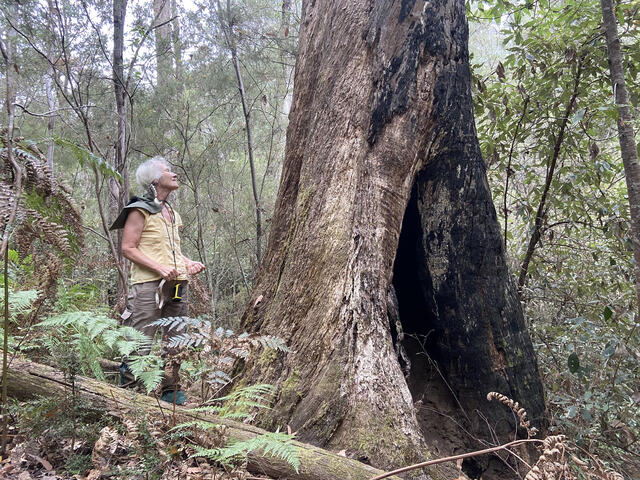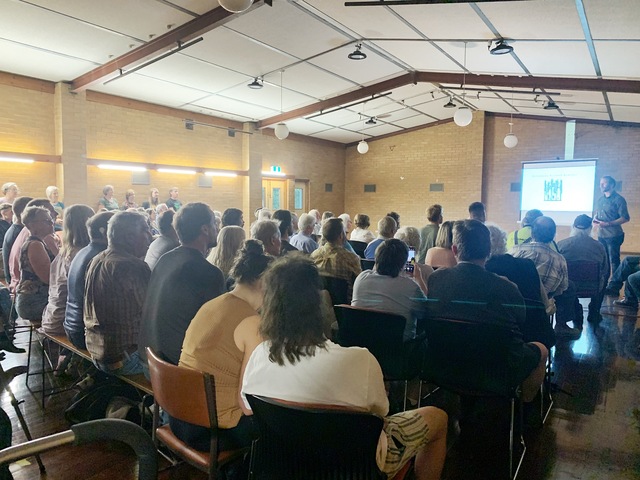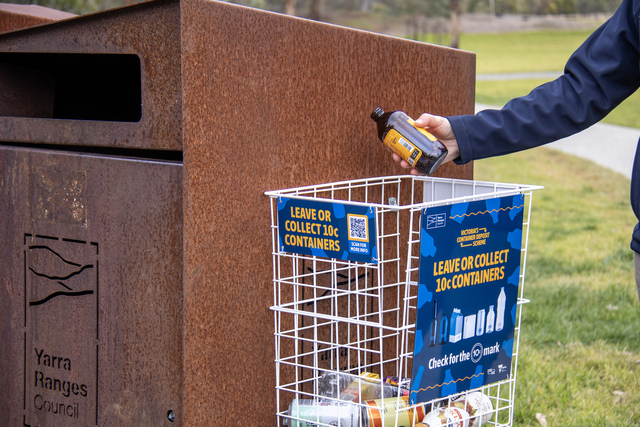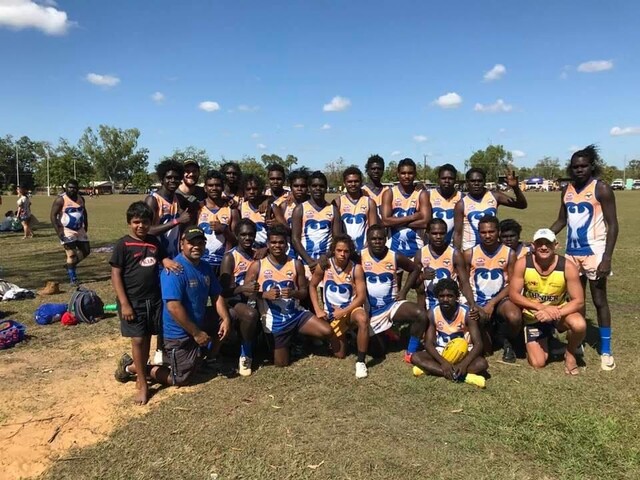Community members are worried about the impact of planned burns in Kinglake.
Kinglake Friends of the Forest (KFF) has intensively surveyed four patches of forest in Kinglake, covered the 60-hectare areas of the 500 hectares, originally scheduled to be burnt on Saturday 23 March, which is now postponed.
The survey found 343 hollow bearing trees, 133 trees with basal scars and patches of threatened plant species, Goodia pubescens, along with 21 detections of Greater Gliders, 13 on one night alone, in the area.
KFF president Sue McKinnon said she is concerned about the impact of the planned burns on the local environment.
“We’ve had 21 detections of Greater Gliders. They are endangered species and are totally dependent on hollows,” she said.
“When a planned burn comes through, hollow bearing trees are 20 times more likely to collapse, so we’re going to lose Greater Gliders either from the direct impact of the fire or loss of their hollow bearing trees.
“It’ll also create a smoke problem for the community and smoke is very dangerous. A lot of people don’t realise how dangerous wood smoke is.”
KFF members walked around the planned burns scheduled area to detect the animals and plants.
“We went walking at night and we had a GPS device on us and when we found Greater Gliders, we took a video of the animal plus the GPS device to prove that the animal was in that location,” Ms McKinnon said.
“We have sent a full report of all of this to Forest Fire Management Victoria and have told them all the gliders, hollow bearing trees and threatened plant species are in the area and also all our concerns related to the burns.”
This year, Forest Fire Management Victoria (FFMVic) has prepared 33 planned burns totalling 4,597 hectares for ignition across Greater Melbourne.
FFMVIC deputy chief fire officer Aaron Kennedy said planned burning is an important part of our year-round bushfire risk management work to protect life, property and the environment.
“Without planned burning and other bushfire risk management works, bushfires will be larger and more difficult for our firefighters to control,” he said.
“Wildlife and the environment are an important consideration in our planned burning program. Specialist staff assess each potential burn site for biodiversity values and develop plans to protect them.”
FFMVic is made up of skilled and experienced staff from Victorian fire and land management agencies and works with emergency sector partners including the Country Fire Authority, Fire Rescue Victoria and Emergency Management Victoria to manage bushfire risk, prepare communities and respond to bushfires and other emergencies.
It also works with the Bureau of Meteorology to assess weather conditions, such as humidity, temperature and wind speed, and will only carry out burns when the conditions are suitable, and it is safe to do so.
KFF invited a fire behaviour scientist Phillip Zylstra to discuss the planned burns.
Curtin University adjunct associate professor Phil Zylstra said planned burns help mitigate bushfire risk in the short term but it doesn’t in the long term.
“You burn away the grass and the leaves on the ground and some of the lower plants and you’ll scotch some of the taller plants. For a year or two after you burn, you have bare ground and that’s what FFMVic is aiming for and that’s the value of the burn,” he said.
“The longer term effect is the grass grows back very quickly and often faster because when you create an ash bed, you’re putting a whole lot of nutrients there, which is like fertilizing the soil.
“So the short term effect is that you create a bare ground which makes it easier to control fires but the long term effect that lasts a few decades after is that you have a lot of very dense regrowth which makes it much harder to fight fires.”
Adj Assoc Prof Zylstra said forests have ways of coping with fire by themselves.
“Forests have survived with fire for many millions of years and they had so many fire sensitive species that survived through all of that time,” he said.
“In the past, Aboriginal fire use was very small and very localised. It wasn’t focused on burning huge areas of the landscape.
“Forests don’t really need us to save them from the fire. What we’re doing, when we burn them, is we’re actually stepping in there and messing up the natural processes that would control fire.
“If we don’t burn the forest and don’t disturb it, plants would get taller and those taller plants are less likely to be burnt as fuel because flames are down on the ground and taller plants are actually slowing the wind underneath them that slows the fire down.”
Adj Assoc Prof Zylstra said planned burns disturb the forests to get less flammable.
“Plants can either feed a fire but if they’re small and close to the ground or they can slow a fire down if they’re tall and slow the wind,” he said.
“The other thing that they do when we get more and more plants that are tall is that they outcompete the plants that are underneath them and they take the water and nutrients and the light so you get less and less plants growing on the ground where they can burn.
“So, as a general rule, the older a forest gets, the less of a problem fire is. Fire is a problem for young disturbed forests and at the moment, we’ve got so much forestry and prescribed burning that have made our forests into these areas of young disturbed forests and so we’re getting more and more bushfires.”








